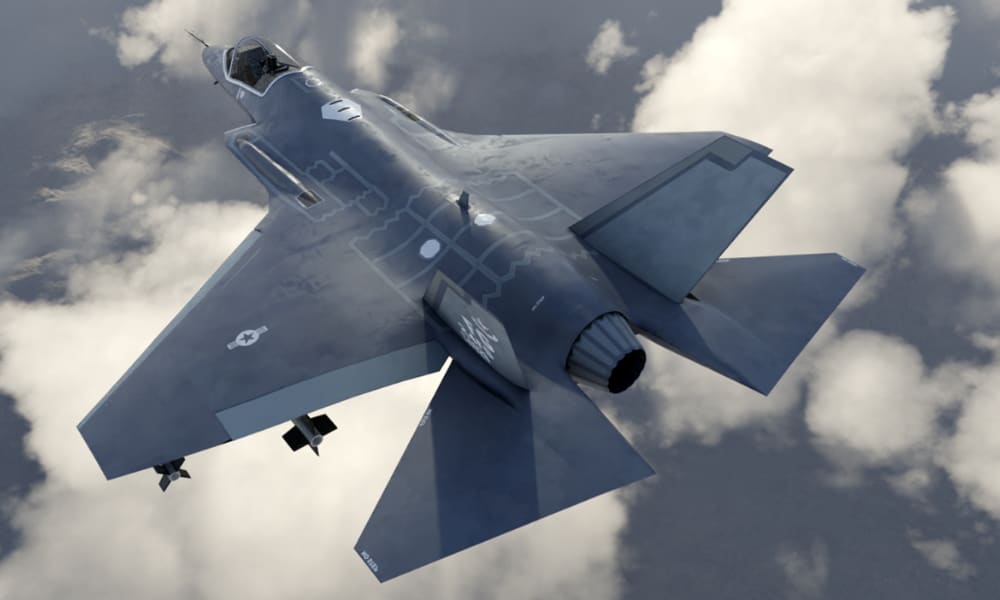If you are searching for “jets That Evade Radar Detection”, you are in the right place. Stealth technology may sound like science fiction. But it is very real.
Many of today’s top military jets use a low-observable design to reduce detection. Still, “invisible” is a misnomer. Even the most advanced have flaws. This article will probe how stealth works and how radar systems fight back.
What is “stealth aircraft technology”?
It refers to low-observable systems that minimise an aircraft’s radar cross section (RCS) and reduce detectability across multiple spectrums – radar, infrared, acoustic. These jets don’t vanish from the sky. They delay detection. They make tracking harder. The tactical advantage is real.

Brief History
Early attempts at reducing detection date back to the Allied efforts in World War II. Later, the U-2 spy-plane pushed radar-avoidance ideas in the 1950s. The modern era began with the F‑117 Nighthawk in the 1980s. The Soviet-born mathematician Pyotr Ufimtsev provided theoretical groundwork for shaping stealth.
Modern Stealth Aircraft Examples
Notable models include:
-
F-117 Nighthawk (retired)
-
B‑2 Spirit bomber
-
F‑22 Raptor fighter
-
F‑35 Lightning II
-
Chengdu J‑20 (China)
-
Sukhoi Su‑57 (Russia)
-
B‑21 Raider (next-gen)
How Radar Detection Works
Radar works by sending electromagnetic waves. These travel, hit a target, reflect back, and are detected. The radar cross section (RCS) quantifies how detectable an object is. Even if a plane looks small on radar, a certain RCS still exists. Larger RCS = easier to track.
Read Also: Prop Plane vs Jet – What’s the Real Difference?
How Stealth Aircraft Evade Radar
Geometric shaping: Sharp edges. Faceted design. Flying wing layouts (like the B-2) minimise vertical surfaces. These shapes redirect radar waves away from the receiver rather than back to it.
Radar-absorbent materials (RAM) and coatings reduce the strength of reflected waves. Materials might convert electromagnetic energy into heat. They work in specific frequency bands.
Engine & exhaust management: Non-circular tailpipes, methods of cooling exhaust gases, internal weapon bays reduce radar and infrared signatures.
These design features combine to produce low “reflection” and low “wavelengths” signatures.

Reducing Non-Radar Signatures
Stealth isn’t only about radar. Infrared (heat) signature is managed through exhaust cooling and shielding. Visual camouflage helps, as does acoustic management to reduce engine noise. Radio frequency (RF) emissions are also minimised; jets may operate in low-probability-of-intercept (LPI) modes.
Counter-Stealth Detection Methods
Low-frequency radars (VHF/UHF): Longer wavelengths (metres) scatter differently. Geometric stealth loses effectiveness in these bands.
Bistatic & multistatic radar: Transmitter and receiver separate. Waves reflected off stealth shapes can be picked up away from the main radar station.
Passive radar, wake-turbulence, satellite detection: These use alternate detection modes such as thermal wakes, disturbances in air, or signal shadows. These detection methods show stealth is not invulnerable.
Operational Tactics & Trade-Offs
Stealth aircraft must still manage range, speed, payload and manoeuvrability. Internal weapons bays limit external stores, reducing RCS but also limiting capacity. Aerodynamics may suffer due to faceted shapes.
Even the F-22 and F-35 must balance stealth with other mission requirements.
The Future of Stealth Technology
Sixth-generation concepts include active camouflage, metamaterial skins, AI-optimised flight profiles, swarm decoys. Detection methods will continue to evolve too. It is a constant dispute between stealth design and radar/detection technology. Research in quantum radar detection probability is ongoing. MDPI
FAQ
Q1. Are stealth aircraft completely invisible to radar?
No. They are designed to reduce RCS and other signatures, not eliminate them. At close range or under optimal orientation, they can still be detected.
Q2. How does radar-absorbent material (RAM) work?
RAM absorbs incident electromagnetic waves and converts them into heat or disperses them. This reduces the returned signal strength that a radar receiver sees.
Q3. Can older radar systems detect modern stealth aircraft?
Yes — especially low-frequency (VHF/UHF) radars which exploit longer wavelengths and can detect stealth craft, though often cannot provide precise targeting.
Q4. What is the biggest weakness of stealth aircraft?
Opening weapon bays, flying in certain orientations, or being exposed to low-frequency radar or multisensor networks are significant vulnerabilities.
Q5. How much does a stealth aircraft cost?
Very high. Development and maintenance of stealth platforms are extremely expensive. High costs stem from advanced materials, precision manufacturing, and lifecycle maintenance.
Q6. Can satellites detect stealth aircraft?
Possibly in future. Research indicates that satellites may detect stealth aircraft using signal shadows or tracking disturbances in electromagnetic or thermal fields.
Final Thoughts
Stealth aircraft represent a major leap in aerospace technology. But stealth is never total. Detection is always possible given the right tech or conditions. What matters is reducing the radar signature, infrared signature, and other signatures sufficiently so the aircraft can penetrate enemy defences with advantage.
The arms-race between stealth fighters and radar systems continues. Understanding “reflection”, “wavelengths”, “RAM”, and how they interplay gives insight into why platforms like the F-22 Raptor and others still matter. For more information visit Crew Daily.


